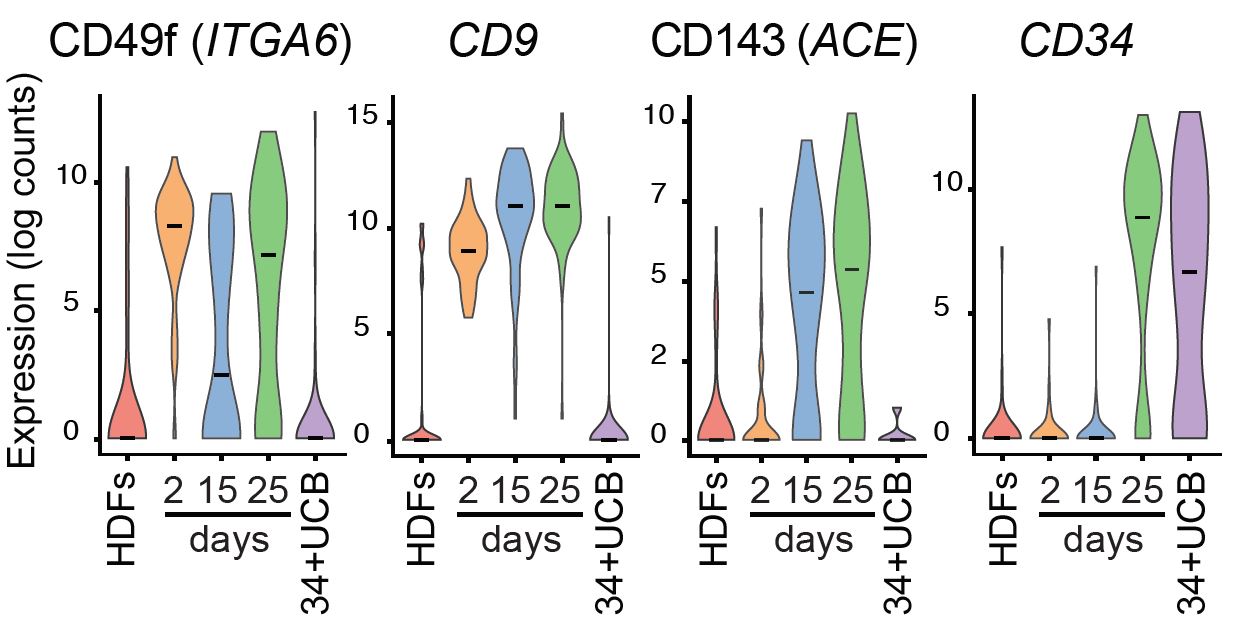Publications
Hemogenic Reprogramming of Human Fibroblasts by Enforced Expression of Transcription Factors

November 4, 2019 / Issue 153
Journal of Visualized Experiments: Jove
Rita Silvério-Alves, Andreia M. Gomes, Ilia Kurochkin, Kateri A. Moore, Carlos-Filipe Pereira
Summary
This protocol demonstrates the induction of a hemogenic program in human dermal fibroblasts by enforced expression of the transcription factors GATA2, GFI1B and FOS to generate hematopoietic stem and progenitor cells.
Abstract
The cellular and molecular mechanisms underlying specification of human hematopoietic stem cells (HSCs) remain elusive. Strategies to recapitulate human HSC emergence in vitro are required to overcome limitations in studying this complex developmental process. Here, we describe a protocol to generate hematopoietic stem and progenitor-like cells from human dermal fibroblasts employing a direct cell reprogramming approach. These cells transit through a hemogenic intermediate cell-type, resembling the endothelial-to-hematopoietic transition (EHT) characteristic of HSC specification. Fibroblasts were reprogrammed to hemogenic cells via transduction with GATA2, GFI1B and FOS transcription factors. This combination of three factors induced morphological changes, expression of hemogenic and hematopoietic markers and dynamic EHT transcriptional programs. Reprogrammed cells generate hematopoietic progeny and repopulate immunodeficient mice for three months. This protocol can be adapted towards the mechanistic dissection of the human EHT process as exemplified here by defining GATA2 targets during the early phases of reprogramming. Thus, human hemogenic reprogramming provides a simple and tractable approach to identify novel markers and regulators of human HSC emergence. In the future, faithful induction of hemogenic fate in fibroblasts may lead to the generation of patient-specific HSCs for transplantation.